
Star Raiders is a space combat simulator video game created by Doug Neubauer and published in 1980 by Atari, Inc. Originally released for the Atari 400/800 computers, Star Raiders was later ported to the Atari 2600, Atari 5200, and Atari ST. The player assumes the role of a starship fighter pilot, who must protect starbases from invading forces called Zylons. Piloting and combat are shown in the 3D cockpit view, while a 2D galactic map shows the state of the Zylon invasion. Neubauer made the game in his spare time at Atari, inspired by contemporary media such as Battlestar Galactica and Star Wars, as well as the 1971 mainframe game Star Trek.

Return to Zork is a 1993 graphic adventure game in the Zork series. It was developed by Activision and was the final Zork game to be published under the Infocom label.

MicroProse is an American video game publisher and developer founded by Bill Stealey, Sid Meier, and Andy Hollis in 1982. It developed and published numerous games, including starting the Civilization and X-COM series. Most of their internally developed titles were vehicle simulation and strategy games.

Adventure is a video game developed by Warren Robinett for the Atari Video Computer System and released in 1980 by Atari, Inc. The player controls a square avatar whose quest is to explore an open-ended environment to find a magical chalice and return it to the golden castle. The game world is populated by roaming enemies: three dragons that can eat the avatar and a bat that randomly steals and moves items around the game world. Adventure introduced new elements to console games, including enemies that continue to move when offscreen.

Pitfall! is a video game developed by David Crane for the Atari 2600 and released in 1982 by Activision. The player controls Pitfall Harry, who has a time limit of 20 minutes to seek treasure in a jungle. The game world is populated by enemies and hazards that variously cause the player to lose lives or points.
An action-adventure game is a video game hybrid genre that combines core elements from both the action game and adventure game genres.
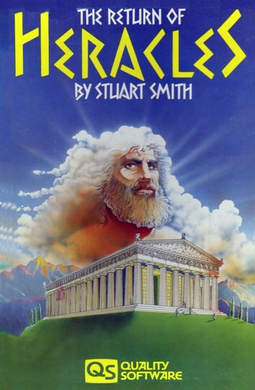
The Return of Heracles is a role-playing video game for the Atari 8-bit computers, Commodore 64 and Apple II. It was written by Stuart Smith and published by Quality Software in 1983. Following Smith's adventure role playing games Fracas and Ali Baba and the Forty Thieves, and built on an engine that was a precursor to Adventure Construction Set, The Return of Heracles is set in the age of Greek myth and allows the player to assume the role of one or more heroes and attempt various quests.
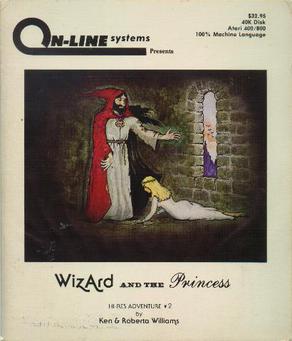
Wizard and the Princess is a graphic adventure game written for the Apple II and published in 1980 by On-Line Systems. It is the second installment in the Hi-Res Adventures series after Mystery House. Unlike its predecessor, which featured monochrome drawings, Wizard and the Princess introduced color graphics. Ports for the Atari 8-bit computers and Commodore 64 were released in 1982 and 1984 respectively. The 1982 self-booting disk version for IBM PC compatibles was renamed Adventure in Serenia.

Tutankham is a 1982 arcade video game developed and released by Konami and released by Stern in North America. Named after the Egyptian pharaoh Tutankhamun, the game combines a maze shoot 'em up with light puzzle-solving elements. It debuted at the European ATE and IMA amusement shows in January 1982, before releasing worldwide in Summer 1982. The game was a critical and commercial success and was ported to home systems by Parker Brothers.
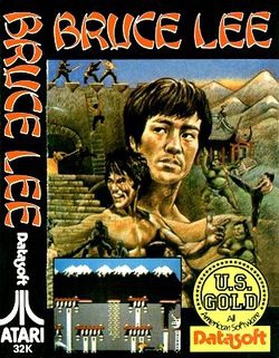
Bruce Lee is a platform game written by Ron J. Fortier for Atari 8-bit computers and published in 1984 by Datasoft. The graphics are by Kelly Day and music by John A. Fitzpatrick. The player takes the role of Bruce Lee, while a second player controls either Yamo or alternates with player one for control of Bruce Lee.

Mission Asteroid is a graphic adventure game for the Apple II written by Ken and Roberta Williams and released in 1980 by On-Line Systems.

Transylvania is an adventure video game published by Penguin Software. It was released for the Apple II in 1982 followed by ports to the Atari 8-bit computers and Commodore 64. A Mac conversion was published in 1984, then versions for the Amiga, Atari ST, and MS-DOS in 1985.

Preppie! is an action video game for Atari 8-bit computers published by Adventure International in 1982. It was programmed by Russ Wetmore of Star Systems Software, whose name is prominently displayed on the box cover. Leaning on the preppy trend of the early 1980s, the game follows prep schooler Wadsworth Overcash as he navigates the hazards of a country club to retrieve golf balls. Preppie! borrows heavily from Konami's Frogger, with lanes of traffic in the bottom half of the screen and a river crossing the top portion. Alligators are an element from both Frogger and preppy fashion; an open-mouthed gator is the icon of shirt brand Izod. Reviewers recognized the game as derivative, but called the music and visuals some of the best for Atari 8-bit computers.

Empire of the Over-Mind is an interactive fiction game written by Gary Bedrosian and published by Avalon Hill for the Apple II, Atari 8-bit computers, and TRS-80 in 1981. A version with an enhanced display for IBM PC compatibles by Bedrosian was published in 1986.

Stone of Sisyphus is a 1981 video game developed by Chameleon Software for the Apple II, Atari 8-bit computers, and TRS-80, and published by Adventure International.
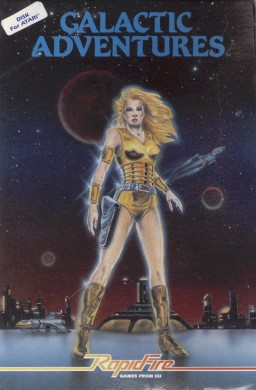
Galactic Adventures is a video game published in 1982 by Strategic Simulations for the Apple II and Atari 8-bit computers.
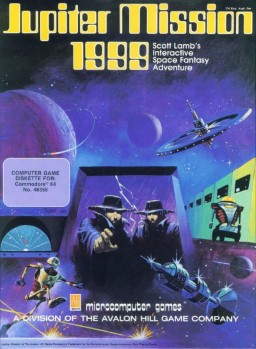
Jupiter Mission 1999 is an action-adventure game written by Scott Lamb for the Atari 8-bit computers and published by Avalon Hill Microcomputer Games in 1983. The game shipped on four floppy disks. It was followed by a sequel in 1984, Quest of the Space Beagle.

Lunar Lander is a 1980 video game published by Adventure International.

Probe One: The Transmitter is a graphic adventure game published by Synergistic Software for Atari 8-bit computers in 1982.
Movie Maker is a computer program published by Reston Publishing Company in 1984 which allows users to author animated visual sequences with audio. Self-playing movies can be viewed without the Movie Maker software. It was developed by Interactive Picture Systems for Atari 8-bit computers. In 1985 it was re-published by Electronic Arts, including a port to the Commodore 64.


















